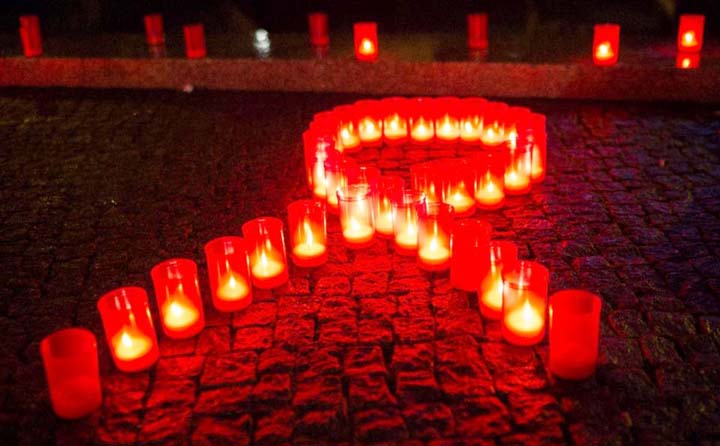
AFP, Geneva :
New HIV infections have fallen by 35 percent since 2000, the United Nations said Tuesday, but stressed that AIDS spending had to be dramatically increased to roll back the disease.
Although new HIV infections declined to two million in 2014 compared to 3.1 million 14 years ago and in 83 countries the number of new infections has noticeably decreased or remained stagnant, spending on AIDS has levelled out, it warned in a report.
Though not a cure, the therapy creates a virtuous circle. The less virus in circulation, the less likely it is that people become infected.
“The world has delivered on halting and reversing the AIDS epidemic,” said UN chief Ban Ki-moon. “Now we must commit to ending the AIDS epidemic.”
“In 2011 world leaders called for reaching 15 million people with life-saving HIV treatment by 2015. And that is exactly what the world did – ahead of schedule,” said UNAIDS chief Michel Sidibe in a report entitled “How AIDS changed everything.”
Although new HIV infections declined to two million in 2014 against 3.1 million 14 years ago and in 83 countries the number of new infections has noticeably decreased or remained stagnant, spending on AIDS has plateaued, it warned.
“After a decade of unprecedented growth, financing for the AIDS response has levelled off. At the same time, the world now has compelling evidence that people with HIV benefit by accessing antiretroviral therapy as early as possible,” it said.
There are currently 36.9 million people living with HIV around the world. Around March this year, 15 million of them were accessing antiretroviral therapy.
UNAIDS said further increases and efficient reallocation were needed to address the “increased need of earlier initiation of antiretroviral therapy” and called for AIDS spending of $32 billion (29 billion euros) annually between now and 2020 in the hope of eliminating the virus by 2030.
A chunk of the money is also needed to ensure that those affected can gain access to therapy, it said.
“Stigma, discrimination and punitive laws continue to affect the people most impacted by HIV and to block their access to HIV services in every region of the world.
“The criminalisation of sex work, drug use and same-sex sexual relationships among consenting adults hinders attempts to reach people at higher risk of HIV infection,” it said.
Sidibe said he was hopeful that the next decade would “give us a more effective vaccine”.
The UN has set up an ambitious treatment target to help end the AIDS epidemic by 2020, aiming to ensure that 90 percent of all people living with HIV will know their status and that 90 percent of those diagnosed with HIV will receive antiretroviral therapy.
The third target is that 90 percent of all people receiving antiretroviral therapy will have viral suppression.
2015 is the deadline year for the Millennium Development Goals which in September 2000 rallied the world around a common 15-year agenda to tackle poverty and hunger, prevent deadly but treatable diseases and expand educational opportunities to all children.
In September, world leaders will gather at the United Nations in New York to adopt a new agenda for sustainable development in which health is a top priority.

